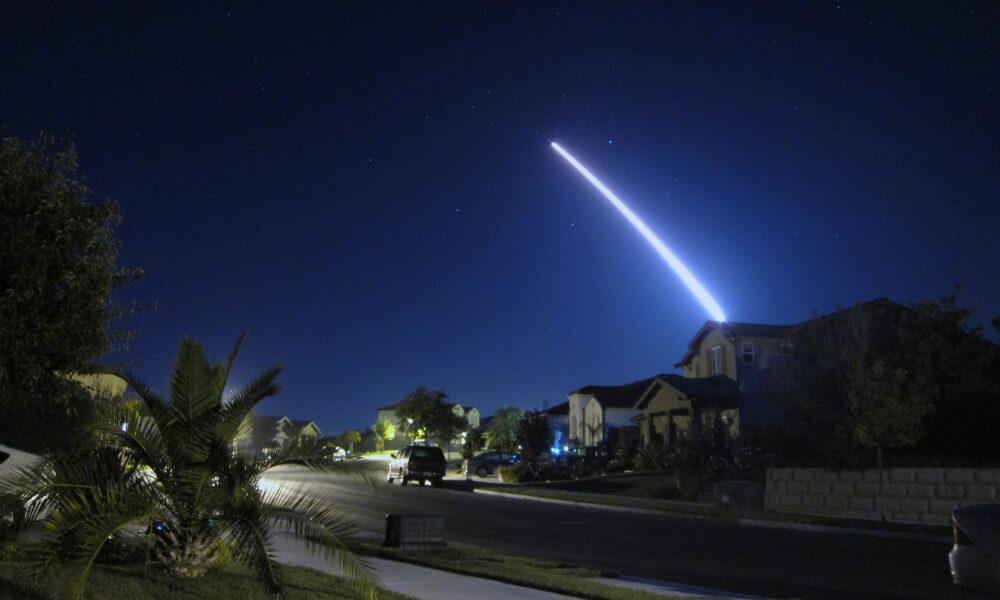Early this year, the Air Force notified Congress that the proposed Sentinel program—which would replace every single US nuclear intercontinental ballistic missile (ICBM) and update related infrastructure—would be at least 37% more expensive than the previous estimate in September 2020. After another round of review, the program’s estimated costs have further ballooned to $140.9 billion, an 81% increase from the 2020 estimate.
The staggering growth in price triggered the Nunn-McCurdy Act, which was passed to give Congress and the public more oversight of out-of-control defense spending. Once a defense program exceeds its initial cost estimates by a certain percentage, the Department of Defense is required to notify Congress and provide information about the cost overruns.
The most severe cases, however, also require the Department of Defense to conduct an investigation into the factors driving cost growth. The program in question will be automatically terminated unless the department certifies that:
- the program is essential to national security,
- the increased costs are reasonable,
- the program is more important than other programs that will need to be cut to cover cost increases, and
- program managers will be able to control additional costs.
On July 8, the Department of Defense certified that the Sentinel program met all relevant criteria to continue. Unfortunately, its analysis of the root cause of the Sentinel’s ballooning cost estimates has not been released to the public. This leaves several outstanding questions for the public, which limits the ability of the Nunn-McCurdy Act to achieve its goal of effective oversight.
What are driving cost increases in the Sentinel program?
During a press conference, Undersecretary of Defense William A. LaPlante said there were “reasons, but no excuses” for the cost growth of the Sentinel program, but provided few details. The majority of cost growth has been attributed to the program’s “command-and-launch segment, which includes extensive communications and control infrastructure” that allow US ICBMs to be launched within minutes of an order.
But there is evidence that mismanagement contributed a great deal to the Sentinel’s explosive costs. Aerospace and defense company Northrup Grumman was awarded a sole-source contract for the program in 2020. Since then, the company has experienced staffing problems, delays with clearance processing, information technology infrastructure challenges, and supply chain disruptions, according to a 2023 report from the Government Accountability Office.
Relying on a single contractor has obvious risks, and the Pentagon failed to intervene when Northrup Grumman’s performance fell below standards. Representative Adam Smith, the ranking member of the House Armed Services Committee, said, “There’s gross malfeasance here both by the people who oversee the project and the contractor.”
What defense programs will be cut to make room for the Sentinel program?
One of the requirements of the Nunn-McCurdy act is for the Department of Defense to evaluate which programs will be reduced to cover the increased costs of the Sentinel program. As part of its review, the department certified that the Sentinel program is a higher priority than those that would need to be cut as a result.
Yet there is no indication of what programs will be cut—or even if the Department of Defense made concrete assessments about such trade-offs in the first place. While the overall budget for the program has exploded, the Associated Press reports that, “The majority of the cost increases to the Sentinel program will take place outside of the next five fiscal years of budget planning, meaning no difficult choices on program cuts will need to be made immediately.”
This attitude of kicking the can down the road is not unusual in defense planning, but it means that the consequences of the Sentinel’s cost overruns on national security remain to be seen.
What alternative solutions were considered?
Part of the root-cause analysis required by the Nunn-McCurdy Act is an evaluation of “reasonable alternatives to the program.” Without access to the report, the public cannot know which, if any, alternatives were considered because of the Sentinel program’s cost overruns.
In 2014, the Air Force completed an Analysis of Alternatives to the Sentinel program, which included the possibility of extending the life of the current fleet of US ICBMs rather than replacing them entirely. This report has not been released publicly either, so we cannot know exactly what metrics or assumptions were involved. But based on its analysis, the Air Force concluded that a full replacement of US ICBMs was the “’most cost-effective option’ for nuclear modernization.”
When its Analysis of Alternatives was conducted, the Air Force estimated that replacing US ICBMS would cost $60 billion. Since then, the price tag has increased by more than 134% to the current estimate of $140.9 billion. This certainly warrants a re-investigation of alternatives, especially since the justification for the Sentinel program was its supposed cost advantage.
Is the Sentinel program actually essential to national security?
The biggest unresolved question is the most important—and demands the full attention of our leaders. Whether the Sentinel program has been mismanaged or whether there are cheaper alternatives, policymakers have not made a compelling or coherent argument about how silo-based ICBMs make the country more secure.
The United States traditionally maintains three different ways to deliver nuclear weapons to a target: by air from bombers carrying cruise missiles or gravity bombs, by sea from submarines carrying ballistic missiles, and by land from silos containing ICBMs. This three-pronged structure is referred to as the nuclear triad, and proponents argue that each “leg” of the triad brings different characteristics to the table.
In the case of the Sentinel and its predecessors, what distinguishes it from other options is its fragility. Compared to aircraft and submarines, the silos that house these missiles are sitting ducks, easy to target and destroy by an adversary’s nuclear forces.
Because of their vulnerability, silo-based missiles can be destabilizing in a crisis. Since they are such obvious, fixed targets, a decisionmaker has very little time to decide whether to use these weapons in a conflict—or during a false alarm. This pressure shortens decisionmaking time and requires the missiles to be on high alert at all times.
Advocates for the land-based leg of the nuclear triad often rebrand this weakness as “responsiveness,” but a hair trigger is a liability that increases the risk of accidental use and escalation.
The Pentagon’s policymakers have failed to offer the public their vision for how silo-based nuclear missiles improve US security, instead repeating the same empty platitudes about nuclear deterrence. Because it offers no strategic value and introduces unacceptable risks, the Sentinel program should be cancelled, regardless of its cost. One penny is too much to spend on weapons that are unsafe and unnecessary.

